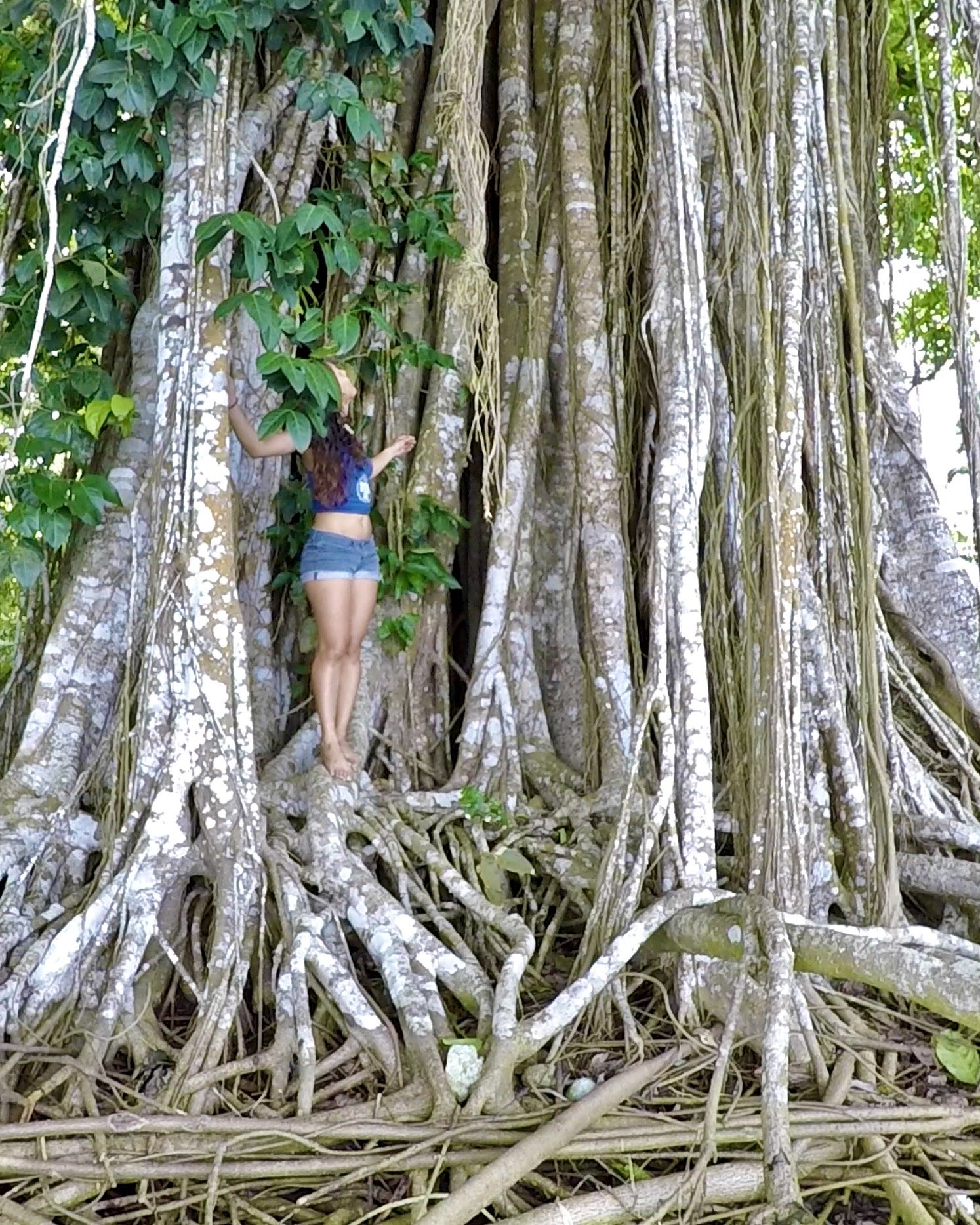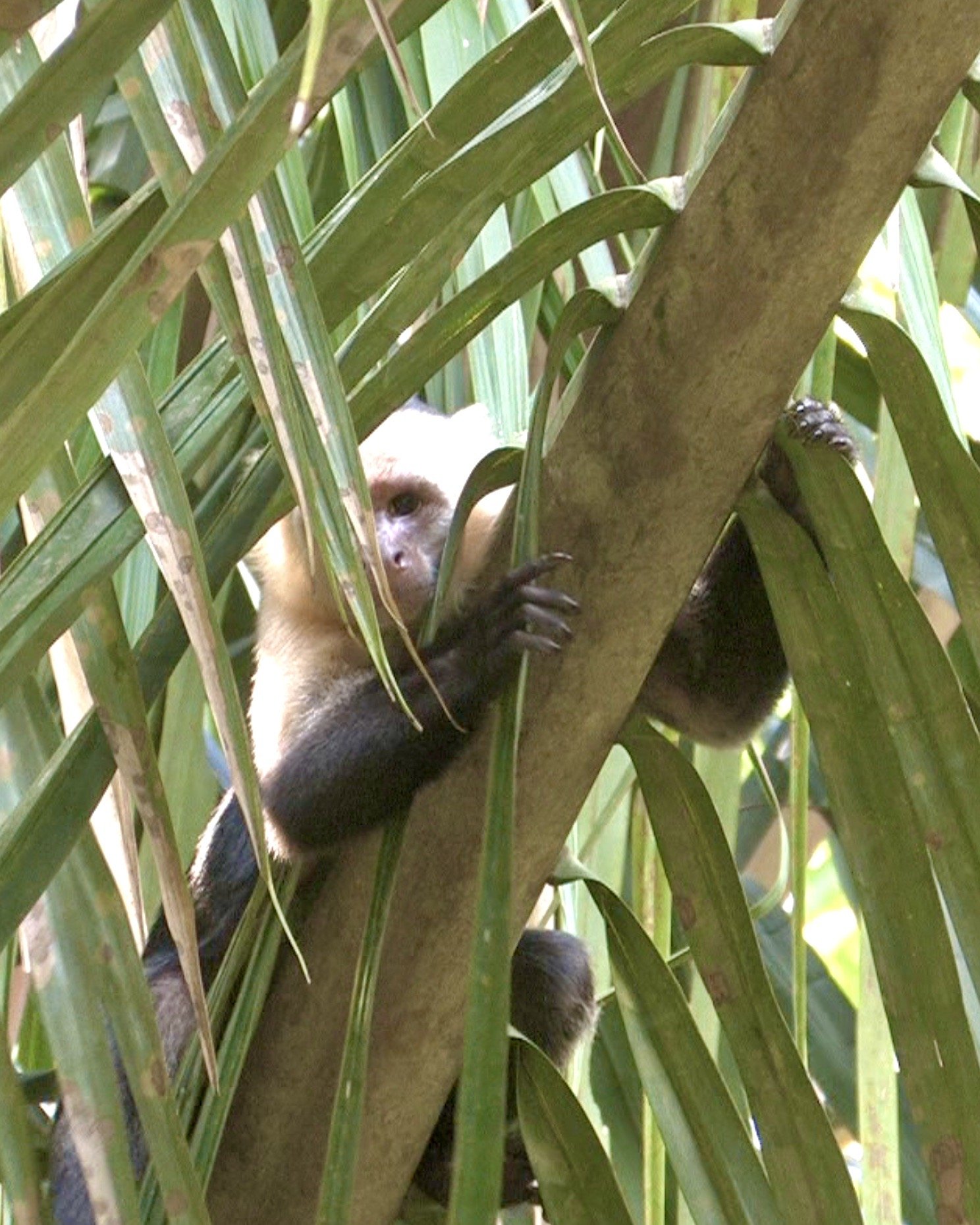Osa Peninsula Rainforest
ECOSYSTEMS
Wonders of Nature in the Lush Rainforests
ECOSYSTEMS OF THE OSA PENINSULA
DIVERSE TOPOGRAPHY AND CLIMATE
DISCOVER, RESPECT, PROTECT
The Remarkable Biodiversity of Osa Peninsula Rainforest: A Critical Habitat for Unique Plant and Animal Species in Costa Rica.
The Osa Peninsula rainforest is a truly remarkable ecosystem, renowned for its incredible biodiversity and unique array of plant and animal species. Located on the southern Pacific coast of Costa Rica, the Osa Peninsula is one of the most biodiverse regions on the planet, home to an estimated 2.5% of the world’s biodiversity. The rainforest of the Osa Peninsula is characterized by towering canopy trees, a dense understory, and a wide variety of epiphytes, which create a unique and complex ecosystem that is vital to the region’s ecological health.
The Osa Peninsula rainforest is home to a vast array of animal species, including jaguars, ocelots, sloths, monkeys, toucans, and many more. In addition to these large and charismatic species, the rainforest is also home to an incredible diversity of insects, birds, reptiles, and amphibians, many of which are found nowhere else in the world. This biodiversity is a testament to the importance of the Osa Peninsula rainforest as a critical habitat for a wide variety of species.

OSA PENINSULA’S VALUABLE ECOSYSTEM
The rainforest of the Osa Peninsula is a unique and valuable ecosystem, home to a tremendous amount of biodiversity and the focus of important conservation efforts.
It is that special.



BIODIVERSITY
The Osa Peninsula is considered one of the most biologically diverse places on earth. The region is home to a tremendous variety of plant and animal species, many of which are endemic (i.e., found nowhere else in the world).
TROPICAL WET FORESTS
The rainforest of the Osa Peninsula is a type of tropical wet forest, characterized by high rainfall, high humidity, and warm temperatures year-round. This unique ecosystem supports a tremendous variety of plant and animal life, including a dense canopy layer, multiple understory layers, and a rich forest floor.
CONSERVATION EFFORTS
The rainforest of the Osa Peninsula is part of a larger conservation effort to protect this important ecosystem. Much of the land in the region is designated as a national park or biological reserve, providing a protected habitat for many of the rare and endangered species that call this region home.
There are several ecotourism initiatives in the area that promote sustainable travel and provide opportunities for visitors to learn about the rainforest and its importance.
COSTA RICA’S OSA PENINSULA INCREDIBLE DIVERSITY
The rainforests of the Osa Peninsula are incredibly diverse, and contain a vast array of plant and animal species. Some of the key ingredients that make up the rainforest ecosystem of the Osa Peninsula include Canopy Trees, Epiphytes, Understory Plants, Wildlife, and Water!
The canopy of the rainforest is made up of tall trees that stretch high into the sky, reaching heights of up to 40 meters or more. These trees are the backbone of the rainforest ecosystem, providing habitat for a wide variety of animal species, and playing an important role in regulating the temperature and moisture levels of the forest.
READ MORE...
Epiphytes are plants that grow on the surface of other plants, such as tree trunks and branches. The rainforests of the Osa Peninsula are home to a vast array of epiphytes, including ferns, orchids, bromeliads, and mosses. These plants play an important role in providing habitat and food for a wide variety of animal species.
The understory of the rainforest is made up of smaller trees, shrubs, and plants that grow beneath the canopy. These plants provide important habitat and food sources for a wide variety of animal species, including birds, insects, and small mammals.

The rainforests of the Osa Peninsula receive large amounts of rainfall throughout the year, and contain a network of rivers, streams, and other waterways that are important sources of water for both wildlife and human communities.
Together, these ingredients help to create the complex and dynamic rainforest ecosystem of the Osa Peninsula, which is a crucial part of the region’s biodiversity and natural heritage.

OSA PENINSULA BIOLOGICAL CORRIDORS

The Osa Peninsula is home to one of the most biologically diverse regions in the world, with many rare and endangered species of plants and animals. These species often require large areas of habitat to survive, and biological corridors provide a way for them to move between fragmented habitat patches, increasing genetic diversity and promoting population connectivity.
BIOLOGICAL CORRIDORS
Biological corridors help to maintain ecological processes such as nutrient cycling, seed dispersal, and predator-prey relationships, which are essential for maintaining healthy ecosystems.
The Osa Peninsula is experiencing some deforestation and habitat fragmentation due to human activities such as logging, agriculture, and urbanization. Biological corridors can help to mitigate the negative impacts of these activities by creating a network of protected areas and connecting isolated patches of habitat.
Biological corridors are important on the Osa Peninsula for maintaining biodiversity, promoting ecological processes, and mitigating the negative impacts of human activities on the environment.
OSA PENINSULA ECOSYSTEMS
The Osa Peninsula in Costa Rica is home to a wide variety of ecosystems due to its diverse topography and climate. While there is some variation in how the ecosystems are categorized, most sources identify between 7 and 11 distinct ecosystems on the Osa Peninsula.
Tropical Rainforest: The Osa Peninsula is primarily covered by rainforest, which is characterized by high rainfall, high humidity, and a dense canopy layer.
ECOSYSTEMS ON THE OSA
Cloud Forest: At higher elevations, the rainforest gives way to cloud forest, which is characterized by cooler temperatures, frequent mist and fog, and a unique assemblage of plants and animals adapted to these conditions.
Mangrove Forest: Along the coast, the Osa Peninsula is home to extensive mangrove forests, which are critical habitats for a variety of fish, birds, and other wildlife.
Coral Reef: Within the Golfo Dulce, there are some coral reefs that support a wide variety of marine life.
Rivers and freshwater ecosystems: The Osa Peninsula is home to a network of rivers, streams, and other freshwater ecosystems, which are important sources of water for both wildlife and human communities.
Beaches and Rocky Shores: The Osa Peninsula has a variety of beaches and rocky shores that are home to a wide variety of marine life, including sea turtles, crabs, and other species.
Wetlands: Wetlands are found throughout the Osa Peninsula and provide important habitat for a wide variety of plant and animal species, including water birds, amphibians, and reptiles.
Seagrass beds: Seagrass beds are important marine ecosystems that provide habitat and food for a variety of marine species, including sea turtles and dugongs.
Rocky intertidal zones: These zones are located at the intersection of land and sea and are characterized by rocky shores that are exposed during low tide. They are important habitats for a variety of marine organisms such as crabs, snails, and sea anemones.
Submerged aquatic vegetation: This ecosystem is found in the shallow areas of the rivers, lagoons, and bays around the Osa Peninsula. It is important for the maintenance of the water quality and is a habitat for a variety of aquatic organisms.
Overall, the Osa Peninsula is a highly diverse region with a variety of unique ecosystems that support a wide range of plant and animal life.

THE GIANTS OF THE RAINFOREST
TREES OF THE OSA PENINSULA
Ceiba: The Ceiba tree is a large, majestic tree that can reach up to 70 meters in height. It is a common sight in many tropical rainforests, including those on the Osa Peninsula. The tree is an important source of food and habitat for a variety of animals, including monkeys, birds, and insects.
Strangler Fig: The Strangler Fig is a unique tree that grows around other trees and eventually overtakes them, creating a hollow cavity in the center. Despite their parasitic nature, these trees are an important source of food and shelter for a variety of animals, including birds and monkeys.
Mahogany: Mahogany trees are prized for their high-quality wood, which is used in furniture and other woodworking projects. They are a common sight in many tropical rainforests, including those on the Osa Peninsula.
Guarumo: Guarumo trees are found throughout the tropical rainforests of Central and South America, including those on the Osa Peninsula. The tree is an important source of food for a variety of animals, including toucans and other birds.
Almendro: Almendro trees are an important part of the rainforest ecosystem, providing food and habitat for a variety of animals, including monkeys and scarlet macaws. They are also valued for their high-quality wood.
Balsa: Balsa trees are large, fast-growing trees that are found throughout the tropical rainforests of Central and South America. They are often used in woodworking and other construction projects because of their lightweight, buoyant wood.
Cocobolo: Cocobolo trees are prized for their beautiful, dense wood, which is often used in high-end woodworking projects. The trees are found throughout Central America, including the rainforests of the Osa Peninsula.
Purple Heart: Purple Heart trees are known for their vibrant purple wood, which is highly valued in woodworking projects. The trees are found throughout Central and South America, including the rainforests of the Osa Peninsula.
Ironwood: Ironwood trees are known for their dense, hard wood, which is highly resistant to rot and insects. The trees are found throughout Central America, including the rainforests of the Osa Peninsula.
Guanacaste: Guanacaste trees are a type of acacia tree that is found throughout Central America. The tree is highly valued for its shade and its hard, durable wood, which is used in a variety of construction projects.
Laurel: The laurel tree is a large, broad-leaved tree that is found throughout the rainforests of Central and South America, including the Osa Peninsula. The tree is an important source of food for a variety of animals, including toucans and other birds.
The tropical rainforests of the Osa Peninsula are home to a diverse array of tree species, many of which are adapted to the unique climate and soil conditions of the region.

OSA PENINSULA MEDICINAL PLANTS
The rainforests of the Osa Peninsula are home to a diverse array of plant species, many of which are used in traditional medicine to treat a wide variety of ailments.
PLANTS OF THE OSA PENINSULA
Guayusa is a type of holly tree that is native to the Amazon rainforest, but is also found on the Osa Peninsula. The leaves of the tree are used to make a tea that is traditionally used to promote mental clarity and alertness.
Sangre de Drago, or “Dragon’s Blood,” is a tree that is found throughout Central and South America. The tree’s resin is used in traditional medicine to treat a variety of ailments, including skin infections, digestive issues, and respiratory problems.
Cat’s Claw is a woody vine that is found throughout the rainforests of Central and South America, including the Osa Peninsula. The bark and roots of the plant are used in traditional medicine to treat a variety of ailments, including arthritis, stomach ulcers, and viral infections.
Ginger is a flowering plant that is used in traditional medicine to treat a variety of ailments, including nausea, inflammation, and respiratory problems. It is a common ingredient in many traditional herbal remedies.
Chanca Piedra is a small herb that is found throughout Central and South America, including the rainforests of the Osa Peninsula. The plant is traditionally used to treat kidney stones and other urinary tract problems.
Boldo is a small evergreen tree that is found throughout Central and South America. The leaves of the tree are used in traditional medicine to treat a variety of ailments, including digestive problems and liver disease.
These are just a few examples of the many medicinal plants that are found on the Osa Peninsula. The region’s rainforests are a treasure trove of traditional knowledge and natural remedies, and many plant species are still being studied for their potential medicinal uses.

ECOTOURISM
Despite its ecological significance, the Osa Peninsula rainforest faces a number of threats, including deforestation, habitat fragmentation, and climate change. Efforts are underway to protect and conserve the rainforest and its wildlife, including the establishment of national parks and other protected areas. However, much work remains to be done to ensure the long-term health and vitality of this incredible ecosystem, which is a vital part of Costa Rica’s natural heritage and a treasure of global significance.
On the Osa Peninsula, your choice matters!
SUSTAINABILITY





THE OSA TOURIST INFORMATION CENTER
Up-To-Date Tourist Information from the Osa Peninsula
Stay updated with the latest specials from the mesmerizing Osa Peninsula by following Osa Tourism on Instagram!
OsaTourism: Where Knowledge Empowers, and if you can't find what you're looking for on the website, please don't hesitate to contact us. We're dedicated to helping you and will do everything we can to provide the assistance you need.
TOP TEN THINGS TO EXPERIENCE ON THE OSA PENINSULA
1. Visit Corcovado National Park: The Park is one of the most biodiverse places on the planet and is home to a variety of wildlife, including jaguars, tapirs, and scarlet macaws.
2. Go Whale Watching: The Osa Peninsula is one of the best places in Costa Rica to go whale watching. You can spot humpback whales, pilot whales, and even orcas.
3. Explore the Beaches: The Osa Peninsula is home to some of the most beautiful beaches in Costa Rica. From white sand beaches to black sand beaches, there is something for everyone.
4. Go Sport Fishing: The Osa Peninsula is a great place to go sport fishing. You can catch a variety of fish, including marlin, sailfish, and roosterfish.
5. Visit the Waterfalls: The Osa Peninsula is home to some of the most beautiful waterfalls in Costa Rica. From the majestic King Louis (Matapalo Waterfall) to the awesome Magical Mogos Waterfalls, there is something for everyone.
6. Go Bird Watching: The Osa Peninsula is home to a variety of birds, including toucans, parrots, and oropendolas.
7. Take a Boat Tour of the Golfo Dulce: Take a boat tour of the Osa Peninsula and explore the mangroves, islands, and beaches.
8. Go Kayaking: Kayaking is a great way to explore the Osa Peninsula. You can paddle through the mangroves and explore the islands.
9. Go Hiking: The Osa Peninsula is home to a variety of hiking trails, from easy to difficult. Explore the rainforest and spot a variety of wildlife.
10. Surfing: It is a great destination for surfers, with some of the best waves in the country. The waves here are suitable for all levels of surfers, from beginners to experienced surfers.
Osa Tourism / Turismo de Osa
WE PROTECT THE THINGS WE LOVE
PROTEGEMOS LAS COSAS QUE AMAMOS
@osatourism
@osatourism
#osatourism
Contact / Contáctenos
SHOWING THE COLORS OF THE OSA PENINSULA
MOSTRANDO LOS COLORES DE LA PENÍNSULA DE OSA
+(506) 8509 6079
CORREO ELECTRONICO
info@osatourism.com
DIRECCION
Puerto Jiménez
Península de Osa, Costa Rica




